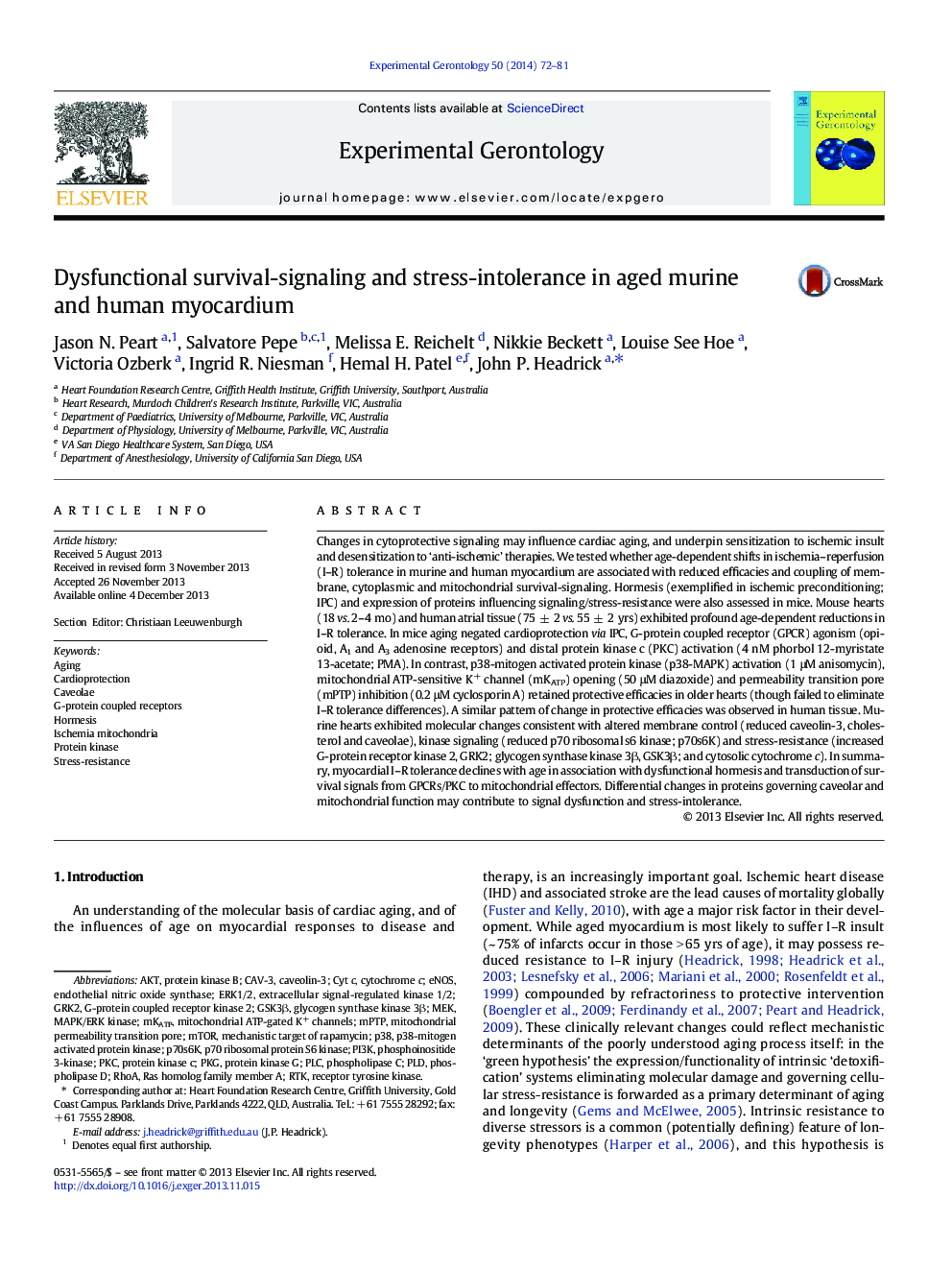| Article ID | Journal | Published Year | Pages | File Type |
|---|---|---|---|---|
| 8264649 | Experimental Gerontology | 2014 | 10 Pages |
Abstract
Changes in cytoprotective signaling may influence cardiac aging, and underpin sensitization to ischemic insult and desensitization to 'anti-ischemic' therapies. We tested whether age-dependent shifts in ischemia-reperfusion (I-R) tolerance in murine and human myocardium are associated with reduced efficacies and coupling of membrane, cytoplasmic and mitochondrial survival-signaling. Hormesis (exemplified in ischemic preconditioning; IPC) and expression of proteins influencing signaling/stress-resistance were also assessed in mice. Mouse hearts (18 vs. 2-4 mo) and human atrial tissue (75 ± 2 vs. 55 ± 2 yrs) exhibited profound age-dependent reductions in I-R tolerance. In mice aging negated cardioprotection via IPC, G-protein coupled receptor (GPCR) agonism (opioid, A1 and A3 adenosine receptors) and distal protein kinase c (PKC) activation (4 nM phorbol 12-myristate 13-acetate; PMA). In contrast, p38-mitogen activated protein kinase (p38-MAPK) activation (1 μM anisomycin), mitochondrial ATP-sensitive K+ channel (mKATP) opening (50 μM diazoxide) and permeability transition pore (mPTP) inhibition (0.2 μM cyclosporin A) retained protective efficacies in older hearts (though failed to eliminate I-R tolerance differences). A similar pattern of change in protective efficacies was observed in human tissue. Murine hearts exhibited molecular changes consistent with altered membrane control (reduced caveolin-3, cholesterol and caveolae), kinase signaling (reduced p70 ribosomal s6 kinase; p70s6K) and stress-resistance (increased G-protein receptor kinase 2, GRK2; glycogen synthase kinase 3β, GSK3β; and cytosolic cytochrome c). In summary, myocardial I-R tolerance declines with age in association with dysfunctional hormesis and transduction of survival signals from GPCRs/PKC to mitochondrial effectors. Differential changes in proteins governing caveolar and mitochondrial function may contribute to signal dysfunction and stress-intolerance.
Keywords
mKATPGSK3βstress-resistancePKCCyt CPKGPLCp38ras homolog family member AMPTPp70S6KeNOSGRK2PI3KPLDmTORRTKRhoAERK1/2G-protein coupled receptorsMAPK/ERK kinasep70 ribosomal protein S6 kinaseAktmitochondrial permeability transition poreCardioprotectionCaveolaeAgingendothelial nitric oxide synthasecytochrome cphospholipase CPhospholipase Dphosphoinositide 3-kinaseMEKMechanistic target of rapamycinHormesisProtein kinaseprotein kinase Bprotein kinase GProtein kinase CCav-3Caveolin-3extracellular signal-regulated kinase 1/2Glycogen synthase kinase 3βReceptor Tyrosine Kinase
Related Topics
Life Sciences
Biochemistry, Genetics and Molecular Biology
Ageing
Authors
Jason N. Peart, Salvatore Pepe, Melissa E. Reichelt, Nikkie Beckett, Louise See Hoe, Victoria Ozberk, Ingrid R. Niesman, Hemal H. Patel, John P. Headrick,
